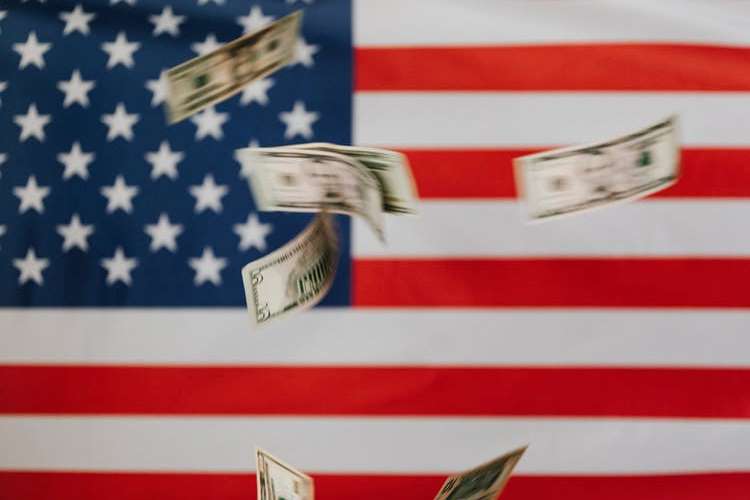Financial Inclusion

Image Source: Pexels
Imagine for a moment what it would be like not to have a bank account, or a credit card–much less, say, the ability to make online payments, get interest on savings, take out a loan, have a credit score, have direct deposit of a paycheck, or have a retirement account or a mortgage. Being part of the financial system is a basic step toward being connected to the broader economy. A team of Federal Reserve economists–Matteo Crosignani, Jonathan Kivell, Daniel Mangrum, Donald Morgan, Ambika Nair, Joelle Scally, and Wilbert van der Klaauw–provide an overview of the extent to which this situation arises in the US economy in “Financial Inclusion in the United States: Measurement, Determinants, and Recent Developments” (Economic Policy Review: Federal Reserve Bank of New York, September 2025, 31:3). They write:
The FDIC defines an individual as “unbanked” if no one in the household has a checking or savings account with a bank or credit union. … Among those with a bank account, the FDIC further defines as “underbanked” those individuals who are banked but underserved by existing saving, credit, and financial products. The latter is measured by use in the past twelve months of at least one alternative high-cost nonbank transaction or a credit product or service disproportionally used by the unbanked to meet their transaction and credit needs, such as money orders, check cashing, international remittances, rent-to-own services, pawnshop or payday loans, tax refund anticipation loans, and auto title loans. Underbanked individuals usually pay high fees for accessing their money and for transactions while having few opportunities to build savings and assets.
According to the latest 2021 FDIC National Survey of Unbanked and Underbanked Households, there are about 5.9 million households (15.6 million adults) that are unbanked, while 18.7 million households (51.1 million adults) are underbanked. … [T]hose who are unbanked accounted for 4.5 percent of U.S. households in 2021, with a further 14.1 percent of households being underbanked. Similar rates for the unbanked are found in three other surveys: 5.5 percent of households in the Board of Governors’ 2019 SCF, 4.7 percent of respondents in FINRA’s 2021 NFCS, and 6.5 percent of adults in the 2020 Atlanta Fed’s SCPC.
In survey data, what do the “unbanked” or “underbanked” say about the reasons why? The blue lines show the reasons given (multiple choices are possible); the yellow lines show the main reason (a respondent can choose only one).

Whatever the reasons given, being unbanked or underbanked imposes substantial costs, typically on low-income households already under financial stress from factors including low income, or recent loss of a job and/or health insurance. What might be done about it?
There have been several significant efforts to increase access to affordable bank accounts to unbanked and underbanked populations. Those efforts include allowing opening deposits under $25, providing access to free online and mobile services, and limiting overdraft fees. Access to a basic and affordable transaction account at an insured institution is seen as a key first step to financial inclusion, providing a safe place to save, conduct basic financial transactions, build a credit history, access credit on favorable terms, and achieve financial security. For example, to benefit from instant payment services through FedNow requires access to a bank account.
An important ongoing effort is the Cities for Financial Empowerment Fund’s Bank On accounts. Since 2008, the Bank On National Account Standards (2023-24) have helped financial institutions connect consumers to safe and affordable bank accounts, centered on safety, cost, and transactional ability. … Those accounts are offered by banks and credit unions representing over 60 percent of the U.S. consumer deposit market, according to the FDIC. More than half (53 percent) of all U.S. bank branches offer a Bank On certified account. The latest Bank On National Data Hub report by the Federal Reserve Bank of St. Louis finds that, to date, more than 14.1 million Bank On–certified accounts have been opened by consumers in 85 percent of U.S. zip codes. Further, in 2021 almost 80 percent of the accounts were opened by customers who were new to the financial institution, indicating that Bank On accounts are bringing new customers into financial institutions. Working through coalitions, Bank On continues to push more banks to adopt its 2023-24 national account standards and grant programs. In addition, Bank On pilot programs are focusing on helping high schoolers connect to the financial mainstream and helping unbanked individuals open bank accounts when they start a new job.
A more recent development, both hopeful and worrisome, is the ability to access banking-like services through online financial technology companies. On one side, it would seem churlish not to welcome some additional options for the unbanked. On the otherside, there is an ongoing concern that some of these options may require high fees and raise a risk of falling deeply into debt. One can imagine a role for an industry standard or a government certification in which fintech companies, if they wished to do so, could offer accounts guaranteed to have low costs in the style of Bank On.
I’ve been reading and writing about the unbanked for a long time now. I have no great solutions. But this feels to me like a problem where a combination of relatively low-cost outreach, pointing out reliable low-costs options, could have a substantial payoff in the daily lives of millions of lower-income Americans.
More By This Author:
Save The Whales By Pricing The Ship Noise ExternalityMortgage Lock-In
Do Rules To Limit High Government Debt Work?
Disclosure: None.



